Dear Readers, Acerola is particularly impressive because of its exceptionally high vitamin C content. This makes it a suitable superfood to protect you from illness, especially in winter. We will tell you about the effectiveness of acerola and about possible risks.
Acerola cherry: Interesting facts about the exotic superfood
The exotic acerola is a true superfood. Hardly any other fruit contains as much vitamin C as this one. That’s why many juices are enriched with acerola.
Externally, it closely resembles the cherry native to this country and is therefore also called the acerola cherry.
However, it has little in common with her other than its appearance. It is primarily native to the tropical countries of South America and is said to have originally come from the Mexican Yucatán Peninsula.
Acerola is now grown in Mexico, Panama, and Brazil, but also in Florida and Texas, among others. It has also been spreading in China and India for some time now.
Acerola can thrive in the most difficult conditions. It grows, for example, on roadsides and mountain slopes but also in moist river areas.
The fruit grows on small bushes or trees that retain their green leaves all year round and can grow up to three meters high. Like the cherry, it can grow between one and three centimeters in size, has a rounded shape, and shines a bright red.
The fruits can be harvested several times a year as they take less than a month to ripen.
Although the fruit consists of 80 percent water, it contains many important nutrients. In addition to the high vitamin C content, the fruit also contains important B vitamins and vitamin A.
It also contains effective secondary plant substances. These valuable ingredients were valued by the Mayans and used to strengthen the immune system.
In traditional medicine in South America, the fruit is sometimes used for diabetes, and diarrhea and to strengthen the cardiovascular system.
Effect of acerola
The acerola cherry contains numerous important ingredients that support the body in its natural functioning and can have a positive effect on health.
The fruit also has few calories and is therefore ideal as a food during a diet.
The taste is reminiscent of currants due to the sour note and is often eaten raw in the countries of origin. In this country, you can only get acerola in processed form as powder or juice.
Immune boosting thanks to natural vitamin C
Acerola contains a considerable amount of vitamin C. With 1,700 milligrams per 100 grams, it is one of the fruits with the highest vitamin C content and can easily outperform citrus fruits such as oranges and lemons.
The exact content of the important vitamin depends on various factors. This may be due to the respective country of origin of the acerola and its exact location. The degree of ripeness of the fruit also plays a role.
Vitamin C is important for many processes in the body. The immune system in particular is said to benefit from the vitamin.
A daily intake of up to 120 milligrams per day is recommended. So you would only need a small amount of fruit per day to meet this requirement.
Environmental influences such as smoking, stress, and illness can increase the need for vitamin C. It’s not without reason that you should consume a lot of vitamin C during the cold season to protect yourself from viruses.
The vitamin not only strengthens the immune system but also acts as a free radical catcher or antioxidant in the body. The antioxidant effect ensures that so-called free radicals are rendered harmless, which could otherwise attack the body’s cells and harm them.
Too many radicals can cause oxidative stress, which promotes the development of serious diseases. Vitamin C is also important for connective tissue, the skin, and the absorption of iron.
Vitamin C deficiency, on the other hand, manifests itself in fatigue and muscle and joint problems. Extreme vitamin C deficiency can cause scurvy, a disease that in the past mainly affected sailors.
They often fell ill because it was not possible to secure a supply of vitamin C during a sea voyage lasting several weeks. Scurvy manifests itself primarily as a pale, gray-to-yellow skin tone, skin inflammation, and attacks of weakness.
But not only a vitamin C deficiency but also an overdose can have consequences. Too much vitamin C can cause nausea and stomach upset. Therefore, you should not eat too many acerola cherries at once.
The vitamin C in acerola is so healthy precisely because it is natural vitamin C. Artificially produced vitamin C is now used as an additive in many foods or as a dietary supplement.
However, natural vitamin C is much more effective than artificially produced vitamin C. Natural foods also contain many other nutrients that can work together with vitamin C.
The absorption of the important vitamin can be promoted or inhibited, depending on the composition of the food in question. Consuming acerola is therefore more effective than taking dietary supplements with artificial vitamin C.
Other vitamins and trace elements
In addition to vitamin C, acerola contains many other important vitamins and trace elements. Above all, vitamin A, some B vitamins, and potassium are contained in the fruit and complement the high vitamin C content of the fruit.
- Vitamin A: Beta-carotene is a precursor to vitamin A and is particularly important for the eyes, but skin, hair, and nails also benefit from this important substance.
- Vitamin B: B vitamins support metabolic processes in the body. Acerola mainly contains vitamins B1 and B2. While vitamin B1 is primarily responsible for metabolizing carbohydrates into energy, vitamin B2 ensures that glucose and fatty acids become energy.
- Potassium: Potassium is also contained in large quantities in acerola. This mineral is particularly important for muscles and nerves as it is responsible for the transmission of stimuli.
Secondary plant substances as health boosters
Acerola contains a variety of phytochemicals that have antioxidant and cholesterol-lowering effects. It contains, among other things, flavonoids, pectins, and anthocyanins.
Many of the phytochemicals are contained in the peel and can therefore be lost during the processing of the fruit. Secondary plant substances have many positive effects on the body.
Anthocyanins are even said to have anti-carcinogenic effects and flavonoids are said to possibly be able to lower blood pressure. This results in a wide range of possible effects that can come from the secondary plant substances in the fruit.
Good alternative to citrus fruits
Acerola is a good alternative to citrus fruits.
People who are less able to tolerate citrus fruits or even have an allergy to citrus fruits can switch to acerola to more easily meet their daily vitamin C needs.
Acerola juice could be an alternative to orange juice. You can mix acerola powder into muesli or smoothies to increase your daily vitamin C intake.
One disadvantage, however, is that you cannot get acerola cherries fresh in this country and you can only use processed versions. Many nutrients may be contained in lower quantities than in fresh fruit.
Acerola powder as a dietary supplement
If you prefer to take acerola as a dietary supplement, you can use acerola powder.
This is made in different ways. It can be made from fruit juice and from the pulp.
The production is particularly gentle using freeze-drying. The fruits are dried at low temperatures below 30 degrees. This means that the nutrients that are particularly sensitive to heat are retained.
These include secondary plant substances and vitamin C, which have significantly lower values than other drying processes. The dried pulp is ground in the next step, creating a fine powder.
The vitamin C content of the powder is very high. One gram of powder alone can contain 170 milligrams of vitamin C. This means that just one gram of acerola powder can cover the recommended daily dose of vitamin C.
That’s why many manufacturers recommend consuming just one gram or half a teaspoon of acerola powder daily.
Acerola juice is a delicious fruit juice
Since acerola cherries spoil quickly, they must be processed immediately after harvest.
This usually happens in the respective country of origin. The quality of the final product depends on the manufacturing process.
To make juice, the fruit must be deseeded and pressed as quickly as possible. But often pure acerola juice doesn’t make it to our supermarkets.
This is often mixed with other fruit juices, diluted with water, and sweetened with sugar. In order to get the purest possible juice, you should use acerola direct juice or possibly fruit juice from concentrate.
Fruit nectar and fruit juice drinks are less recommended as the fruit juice content is often low and may contain flavorings.
Risks of Acerola
In addition to the numerous positive effects and properties of acerola, there are also some risks that can be associated with consuming acerola.
These are less due to the nutrients they contain and more often due to the way the product is manufactured. Many risks are similar to those of other superfoods that are similarly processed.
Strong workmanship
Since acerola cherries spoil quickly, they must be processed shortly after harvest. This often happens in the country of origin of the fruit. The fruits are either dried or pressed. Important nutrients are often lost during these processing steps.
If the fruit is pressed and processed into juice, the fruit juice must be pasteurized for a longer shelf life. This process can sometimes result in the loss of sensitive materials. The situation is similar with some drying processes.
If the fruits are dried at high temperatures, important ingredients are lost.
Easily perishable
Because the fruit spoils quickly, harvesters must proceed with extreme caution. They often pick the fruit by hand.
In addition, there are special machines that assist with harvesting and removing the fruit from the bushes without damage.
Immediately after picking, the fruits are stored in cool boxes and transported in these for further processing.
If the fruits are stored for too long, they can spoil. Therefore, a precise workflow during production is extremely important.
Allergies due to acerola
It can certainly happen that acerola cherries trigger allergic reactions. That’s why you should first approach the respective products slowly and distort smaller quantities.
In some cases, acerola juices are added in small amounts to other juices to increase the vitamin C content. These juices can also cause allergic reactions. If you are allergic to latex, a cross-reaction can also occur.
Alternatives to acerola
Acerola has very high vitamin C content, but also some risks. If you want to avoid these, you can use other foods with lots of vitamin C.
Citrus fruits such as oranges and lemons with a vitamin C content of around 50 milligrams per 100 grams are suitable for this.
Rose hips and currant juice are also suitable sources of vitamin C. Rose hips have a vitamin C content of over 400 milligrams per 100 grams. Sea buckthorn is also a real vitamin C bomb. The berries contain around 450 milligrams of vitamin C per 100 grams.
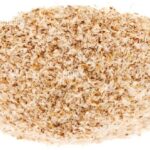

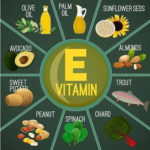
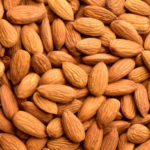

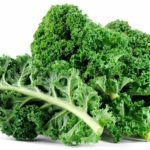
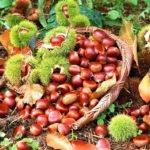
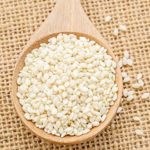





Leave a Reply